The Campanile History, Travel Information, Hotels, Facts And More
Rate The Campanile as Church here
PERSONAL INFORMATION
NAME
The Campanile
OTHER NAMES
bell tower of lake Resia, Camapanile Di Curon bell tower
COUNTRY
Italy
ADDRESS
Reschensee/ lake reschen, South Tyrol, Italy.
THE CAMPANILE PICTURE
More Information
About The Campanile
Flooded by the water of Italy's Lago di Resia, the Campanile di Curon is what is remnant of the old town of Curon Venosta. The lake is an artificial one, created shortly after the second world war. The belfry, submerged in the water, is the symbol of Van Vanosta valley.
Some Lesser Known Facts About The Campanile
- The small town of "Curon Venosta" was submerged, when three water bodies were combined to form an artificial lake.
These three water bodies were Lago de resia, Lago di san valentino and Lago di Curon.
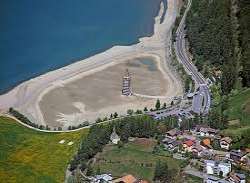
- When the lake freezes over during winter, it makes it possible to walk on ice and explore the tower. Although the bells were removed before the creation of the lake, it is said that you can sometimes hear them ringing inside the tower.
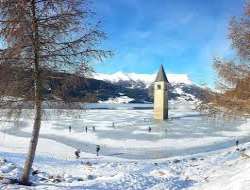
- The evening of July 16, at 8 pm, the bells rang for the last time in St. Peters church. A few days later, the bell was rescued by the residents. The church was blown up on July 23, only leaving the bell tower in place.
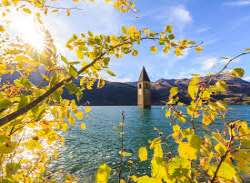
- When the reservoir near the Passo di Resia was constructed for the production of electricity, the villages of Curon and parts of Resia were waterlogged in 1950. The inhabitants and the owners of the farms were disposed forcibly and forced to resettle.
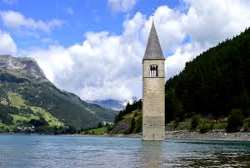
- The town residents were against the idea of an artificial lake, by combining two natural lakes, the company forced the idea down on the inhabitants. The towns and nearby villages were blasted and flooded.
- With the towns and villages destroyed, it is said around 677 hectares of land was flooded.
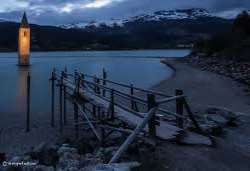
- Thousands of years of history, which went back to the roman times, was completely erased. More than 162 houses were flooded.
- Activities like hiking, fishing, kite-surfing, and other water sports are the attractions for visitors.
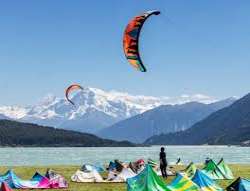
- The only thing visible today is the campanile or the tower of Graun's 14th century church tower. Below the water of the lake, lie the remains of a city that once flourished.
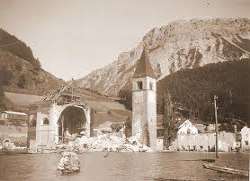
- It is considered one of the largest lakes in the province as it has a capacity of 120 million cubic meters. Also, its surface area is 6.6 sq.km, which makes it the largest lake in the Alps.
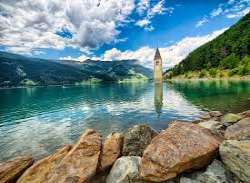
- The only thing visible today is the campanile or the tower of Graun's 14th century church tower. Below the water of the lake, lie the remains of a city that once flourished.
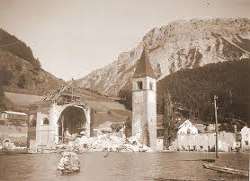
USER RATING FOR THE CAMPANILE